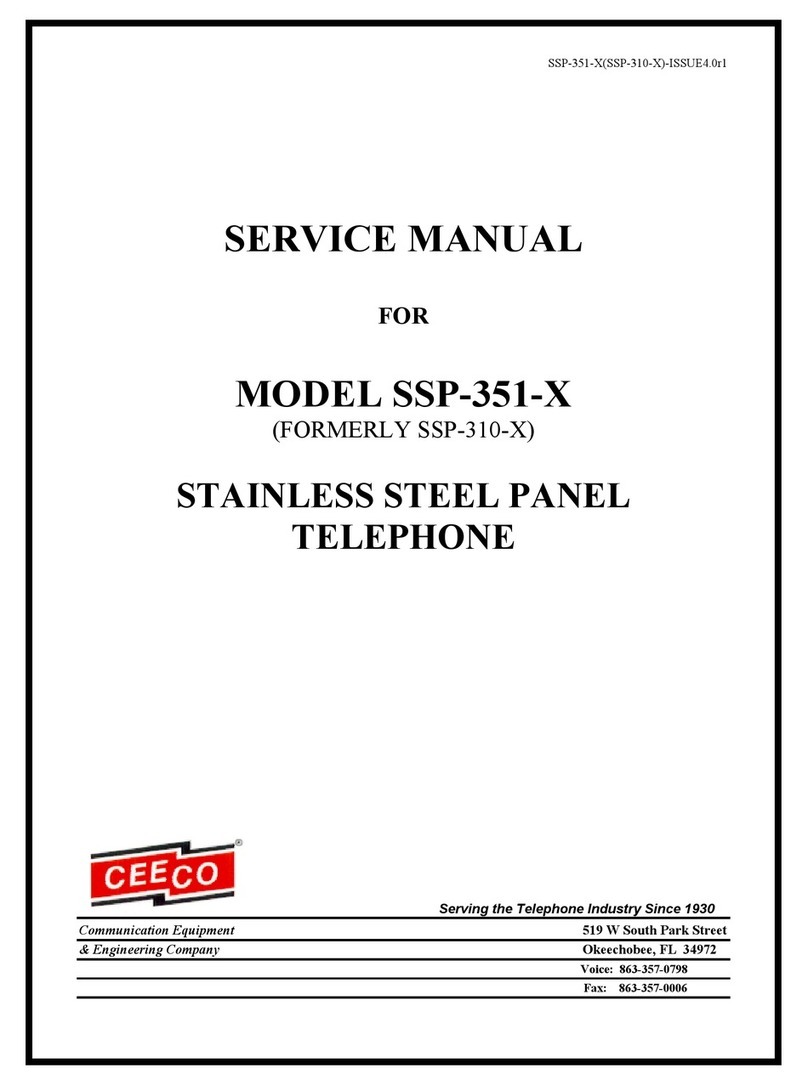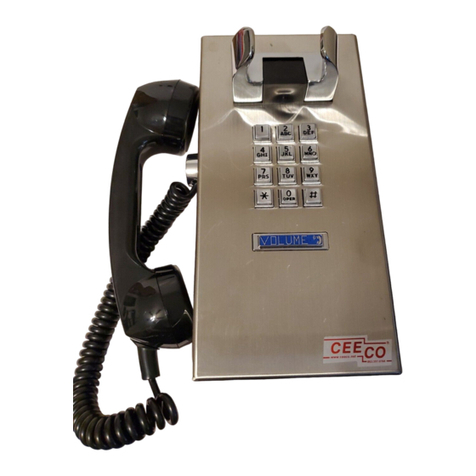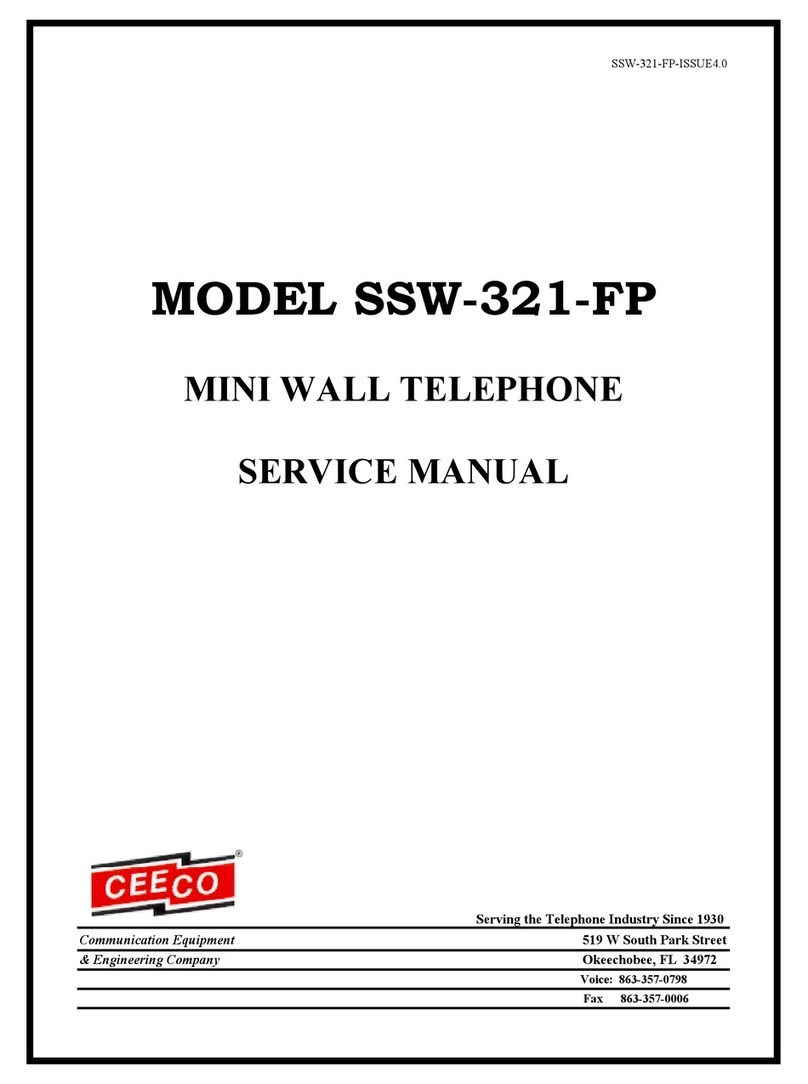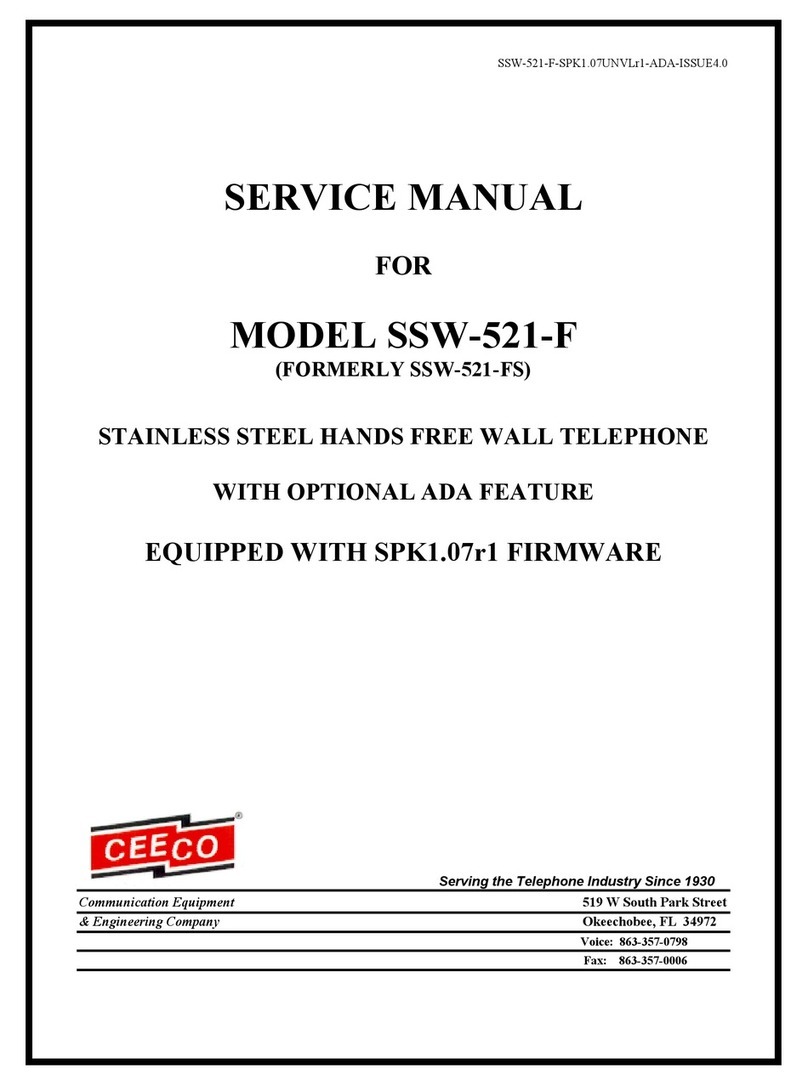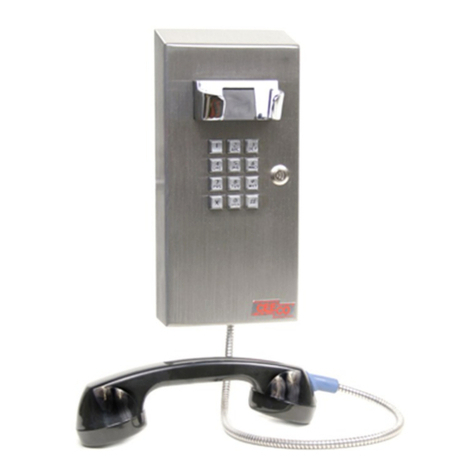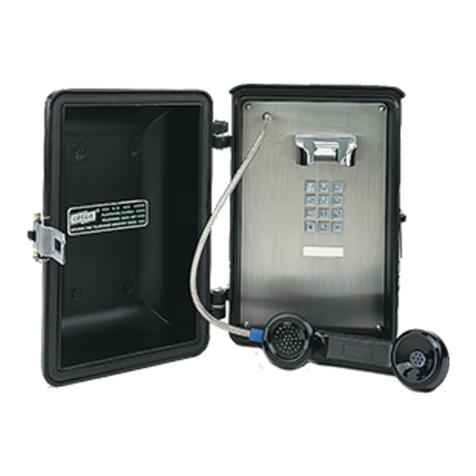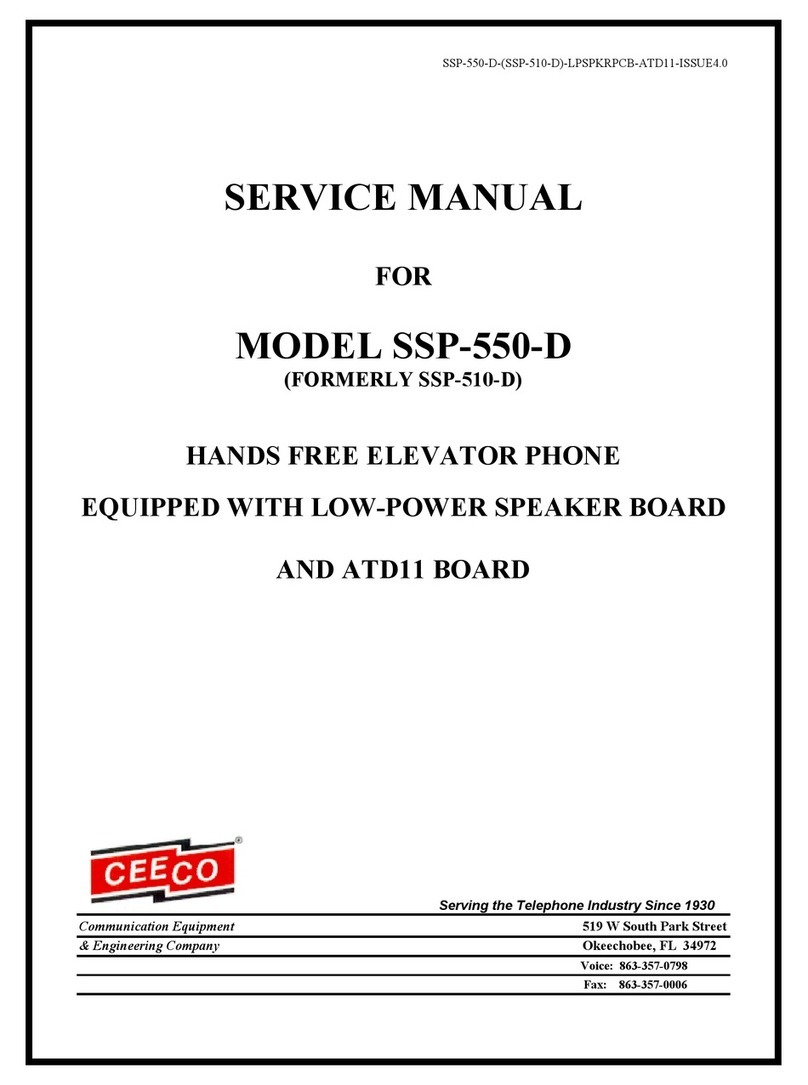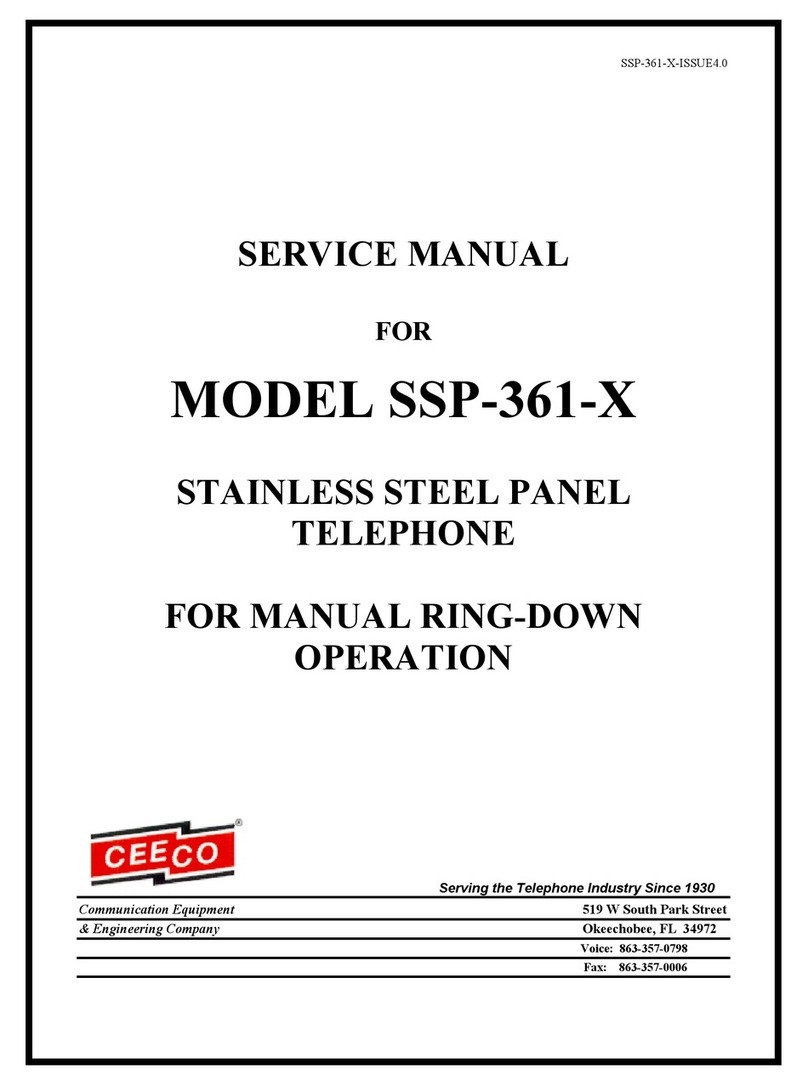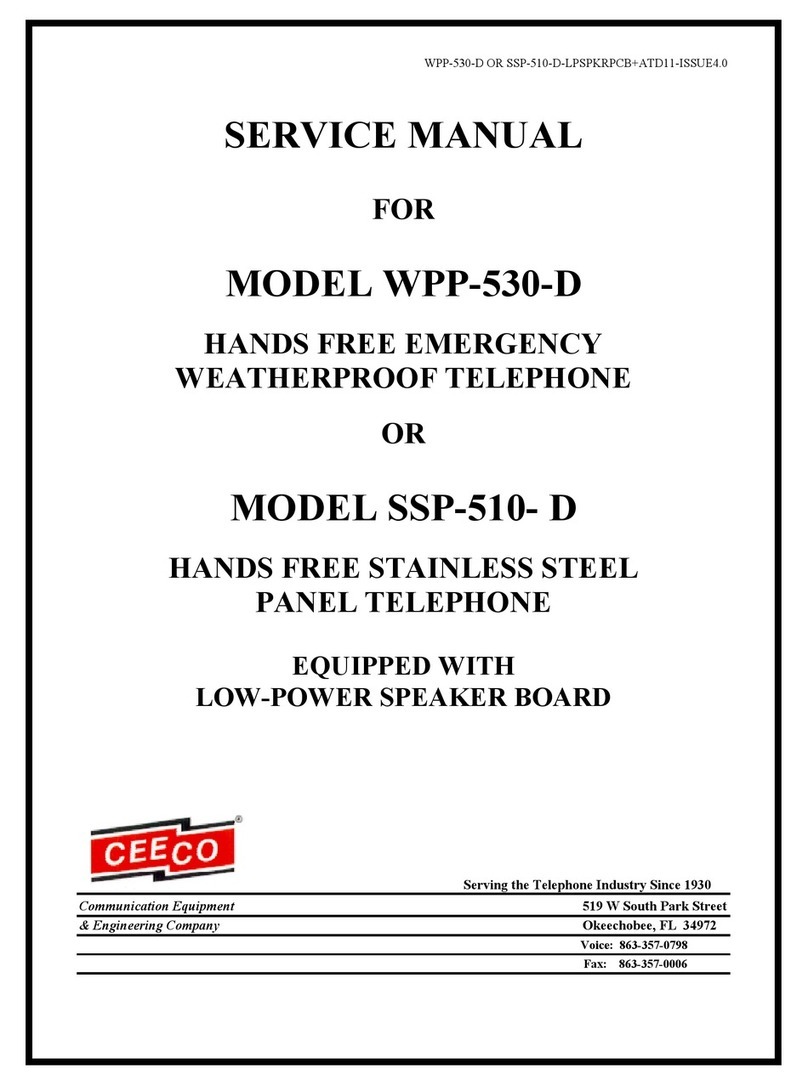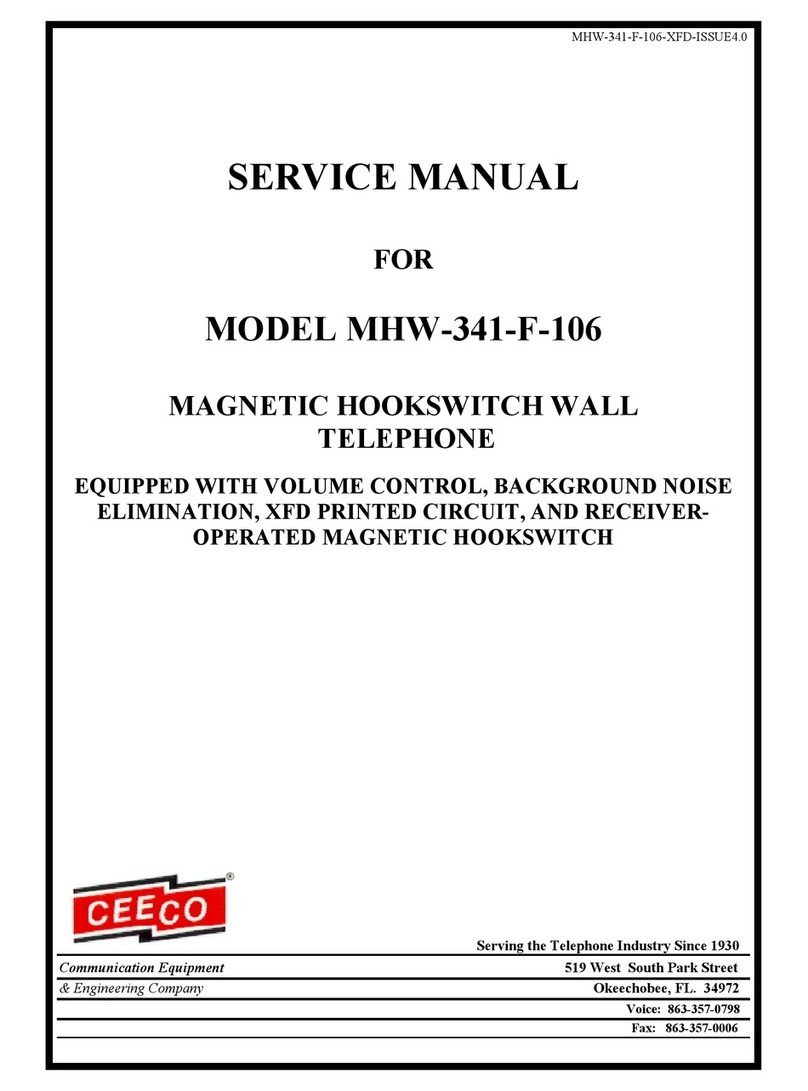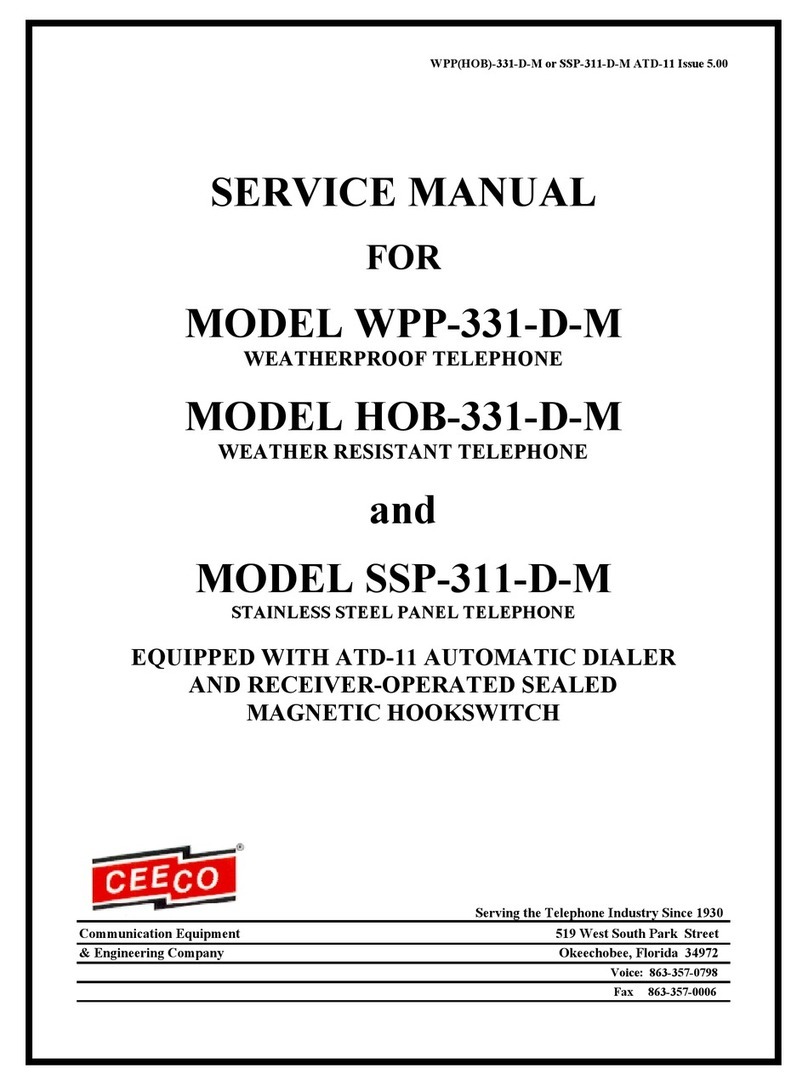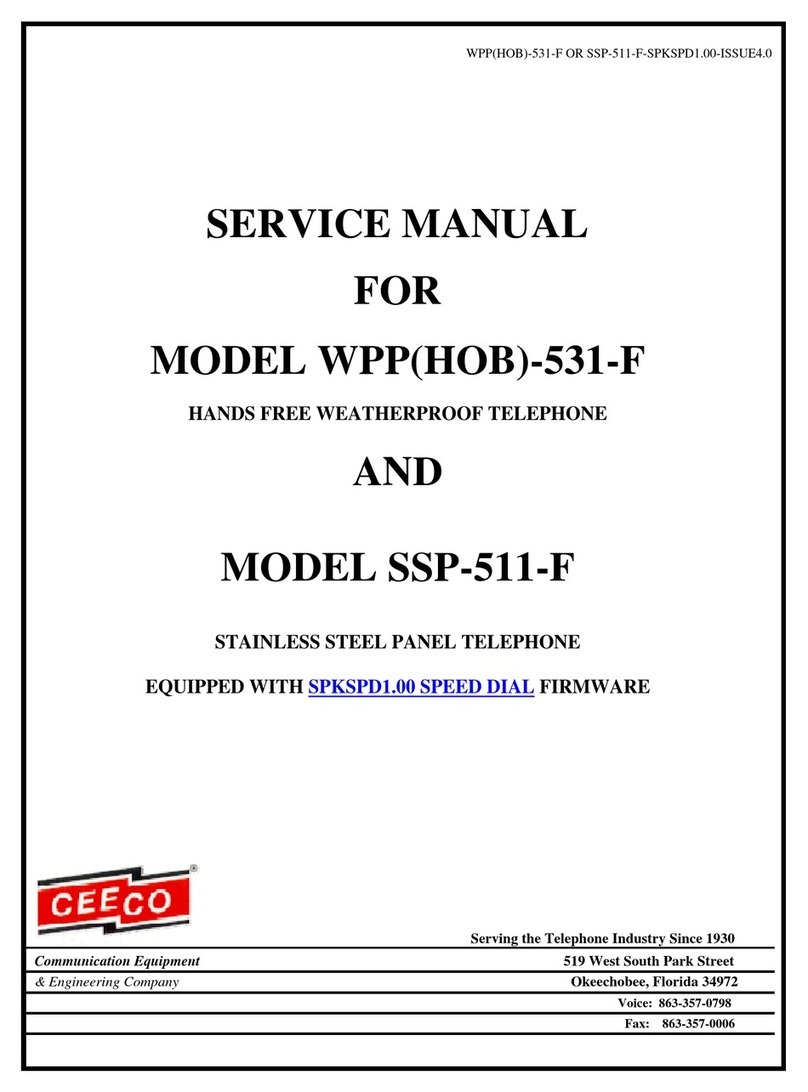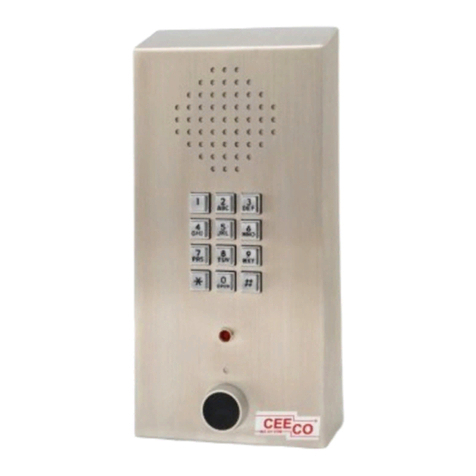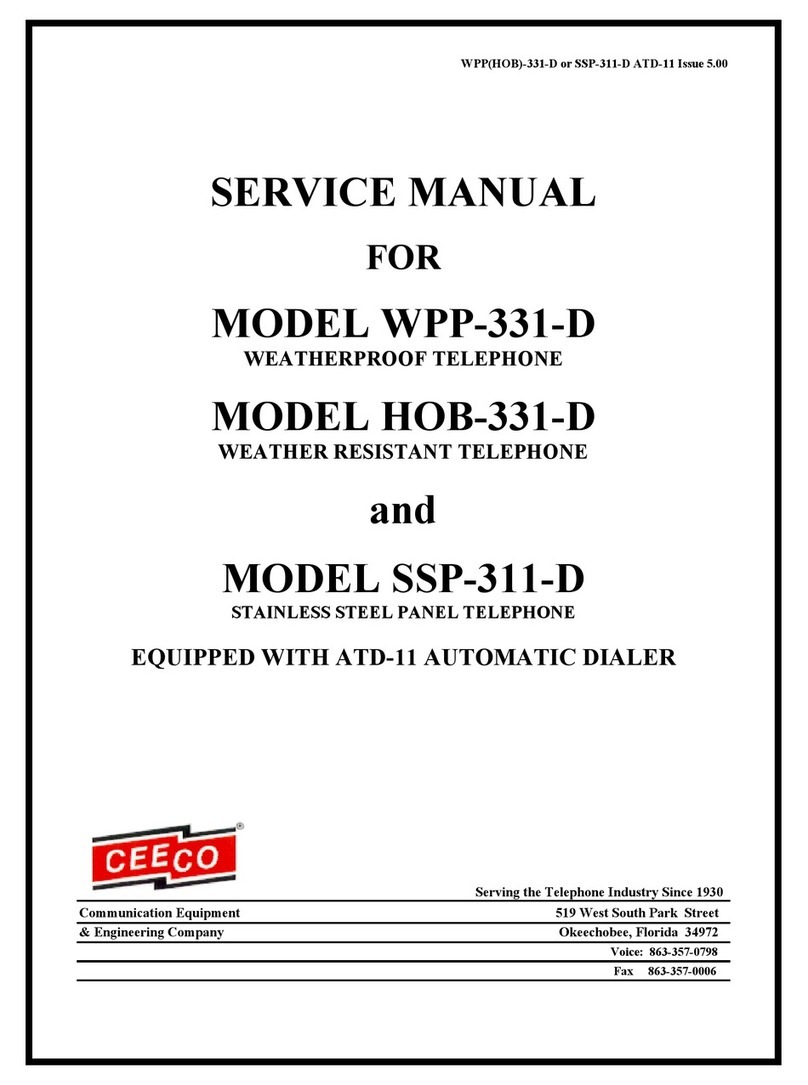
ISSUE 4.0
CEECO
Communication Equipment & Engineering Company
PROPRIETARY
10
4.0 TESTING/OPERATION
4.1 With the phone connected to the DTMF test set or a working telephone
line, lift the handset. Any auto-dial number(s) that was programmed
(sections 3.6 and 3.7) should automatically dial out, at this time. If not,
hang up the phone and repeat sections 3.2, 3.3, 3.6, 3.7, and 3.10 only. If
this does not solve the problem, please refer to section 8.2. If no auto-dial
number(s) was programmed, dial tone should be received.
4.2 If speed-dial numbers were programmed, try them now. When a speed-
dial location is entered on the keypad (#30 thru #69) the corresponding
programmed number should dial out. For example, entering #30 should
cause the phone to automatically dial any number programmed in
Location #30. If not, hang up the phone and repeat sections 3.2, 3.3, 3.8,
and 3.10 only. It is not necessary to try to reprogram all of the speed dial
locations, but only the ones that are not working. If this does not solve the
problem, please refer to section 8.2. Test all of the speed-dial locations
that have been programmed. The phone must be hung up between the
testing of each number.
4.3 If phone implemented call restrictions were programmed, try some of
them now. The phone should only permit “allowed” calls to be dialed.
When a number is dialed that has not been programmed as “allowed”, the
phone should sound an error tone (three short beeps) and reset the line. If
not, hang up and repeat sections 3.2, 3.3, 3.5, 3.9, and 3.10 only. If this
does not solve the problem, please refer to section 8.2.
4.4 Try placing a call to the phone. If the phone was programmed to accept
incoming calls, it should ring and be answered with normal phone
operation to follow. If it was programmed not to accept incoming calls, it
will still ring, but when it is answered the called party will not be heard on
the far end. The microphone will be muted. The Phone will then sound
an error tone after approximately four seconds and reset itself. If not,
hang up and repeat sections 3.2, 3.3, 3.5 and 3.10 only. If this does not
solve the problem, please refer to section 8.2.
4.5 If the phone was programmed to automatically time and disconnect the
phone call (Call timeout feature), try making a telephone call. Time the
call and see if the phone, in fact, automatically disconnects after the
programmed time period. Please keep in mind that this will not be exact.
If this fails, hang up and repeat sections 3.2, 3.3, 3.5, and 3.10 only. If this
does not solve the problem, please refer to section 8.2.

